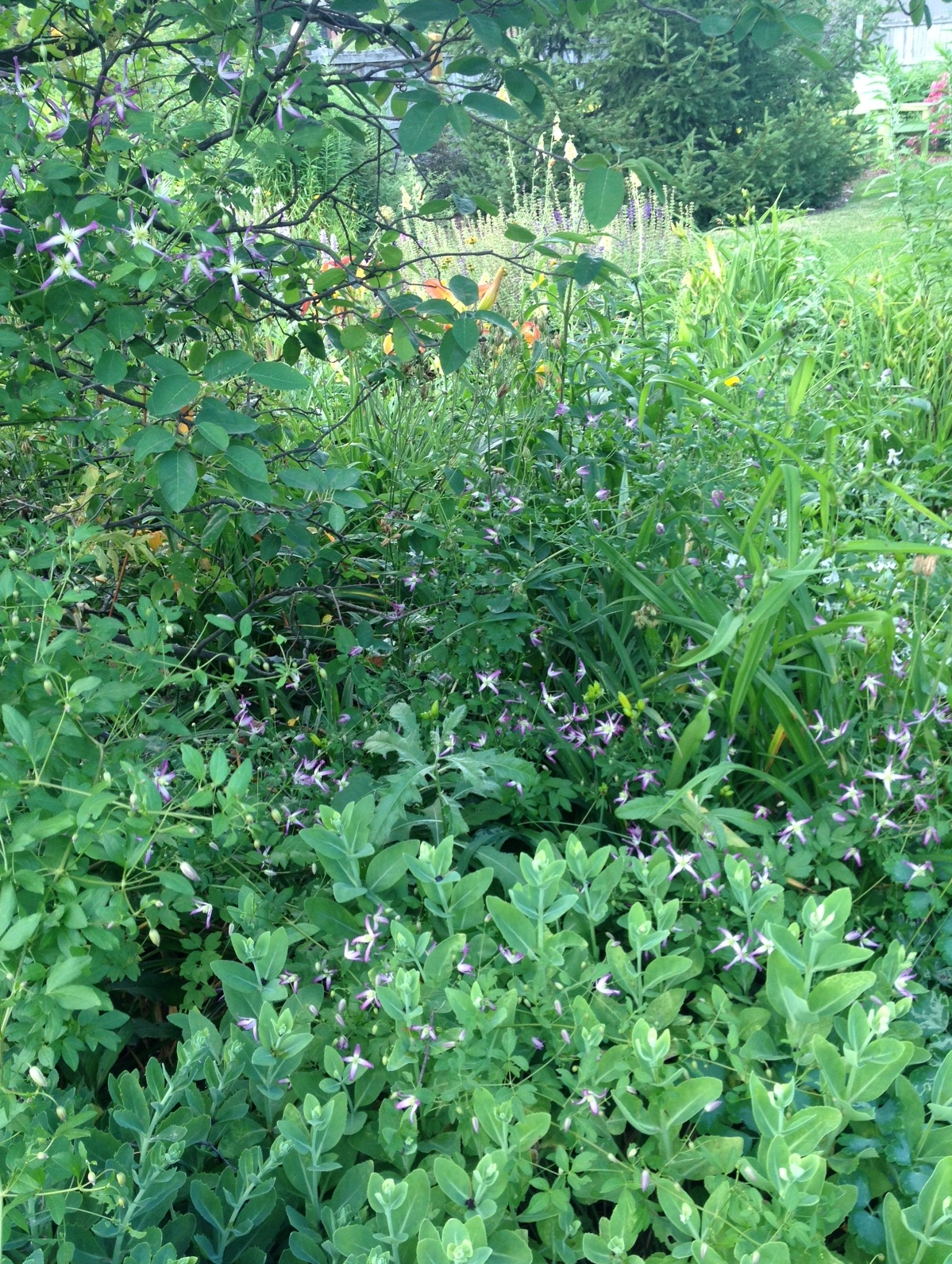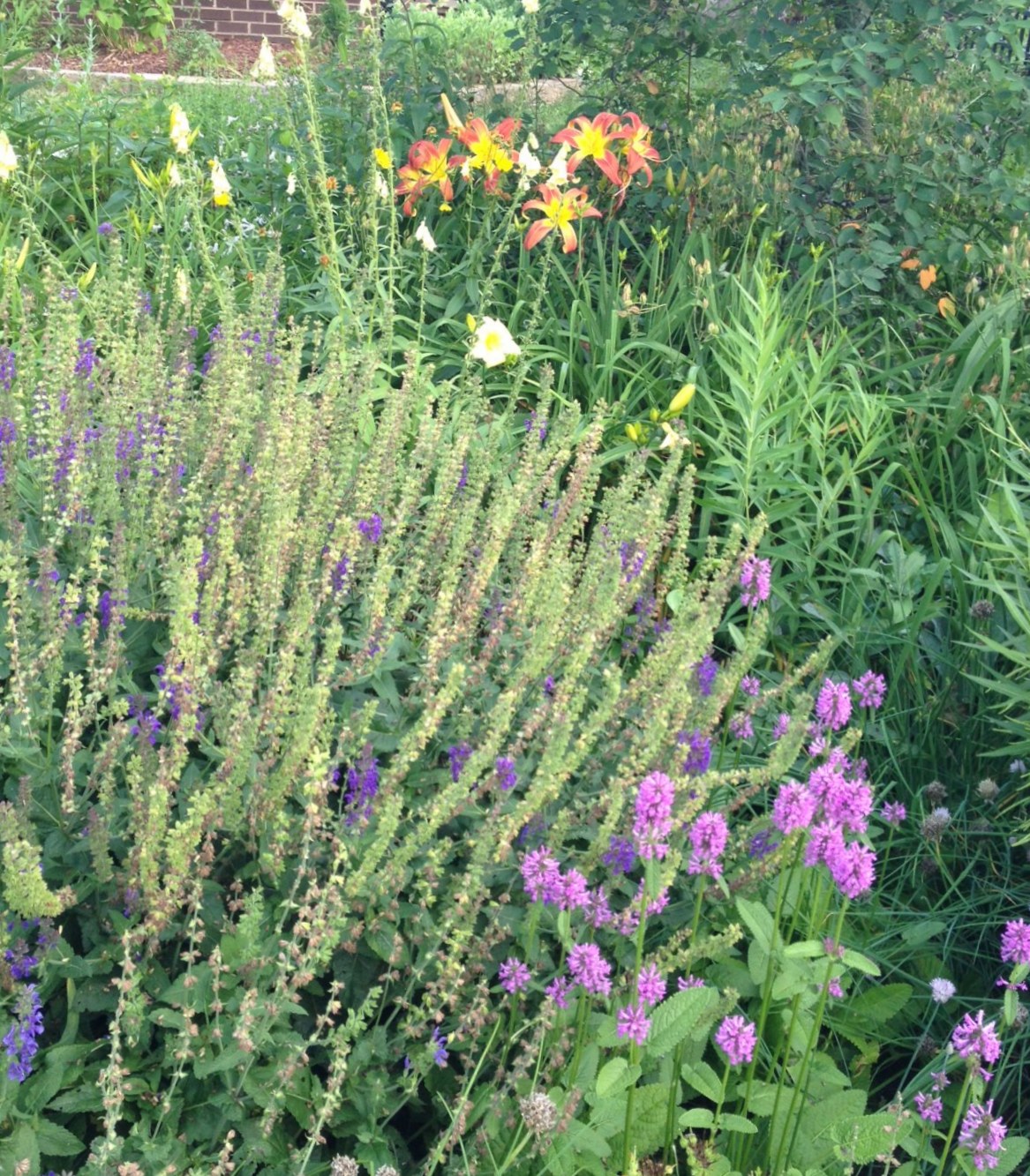
In Plopper’s Field, the little fairy bower vine, Clematis x triternata ‘Rubromarginata’ weaves its way through the branches and stems of all the other plants. It’s white and purple blooms seem to hang in mid-air.
I occasionally wade into the midst of this border to pull out the all too prevalent thistle weeds and the self-imposed spiderwort and perennial sweet pea thugs. I look for a bare spot that looks big enough for my foot, then step in and look around for another spot for the other foot. Then I try to pull the weeds within reach and deadhead any flowers around me that have spent blooms.
Inevitably, once I step out of Plopper’s Field, I see something I should have attended to that was within my reach before, perhaps a thistle that was so close I should have felt its prickly thorns on my leg.
Do you see the thistle in the lower center of this photo of Plopper’s Field?
That’s one nice feature of this thicket of perennials I call Plopper’s Field. The weeds are hidden to all but the trained eye of an experienced weed-spotter.
I created Plopper’s Field by buying plants I love, sometimes just one of a plant, and then plopping them in wherever there was a decent sized bare spot, hoping that the newly added plant wouldn’t be taller than the plant behind it.
Though, because I can walk around three sides of Plopper’s Field, it isn’t always easy to figure out what is the front of the border. I suppose that means the tallest plants should be in the middle. I can assure you they are not. There are tall asters on the edge of the border on one side.
I love the wild exuberance that Plopper’s Field has become, a mix of any plant that caught my fancy, whether tame or wild. But I need to think about thinning out some of the perennials in Plopper’s Field for the good of all the plants. I need to thin out the more aggressive plants and move some of the smaller, more timid plants that got caught in the crowd so they have a chance to show their blooms where I can see them.
However, this isn’t the season to do that. I will do that in early spring just as the new growth is coming up. I know the result will be a better garden border next year, plus many plants to share with others.

In the meantime, I think it is past time to deadhead these salvias, so the daylilies behind them, all mostly spider forms, can become the focal point in Plopper’s Field now.
And is that another thistle weed I see?


I always plan to move plants in the spring but rarely remember to do it. Or I forget what was where. I've taken to moving things when the spirit moves me… whether the plant is in bloom or not. I may miss a season but at least the move gets made.
I think we all have areas like your Ploppers field, eventually the thugs take over and it all need redoing. That's an excuse to buy more lovely plants and start again! I usually re-do one of my borders each year, so that works out at about a 10 year rotation!
Did you say thinning! That's the hardest chore for me to complete and my garden remains a clown pants! xogail
How very lush. Here it is so terribly hot…your garden looks so happy…and uncooked.
At one point, my entire garden was a Plopper's Field, but I've thinned and culled until only the best remain. However, I do like the idea of keeping one spot just for plopping. After all, life isn't all about order, now is it?